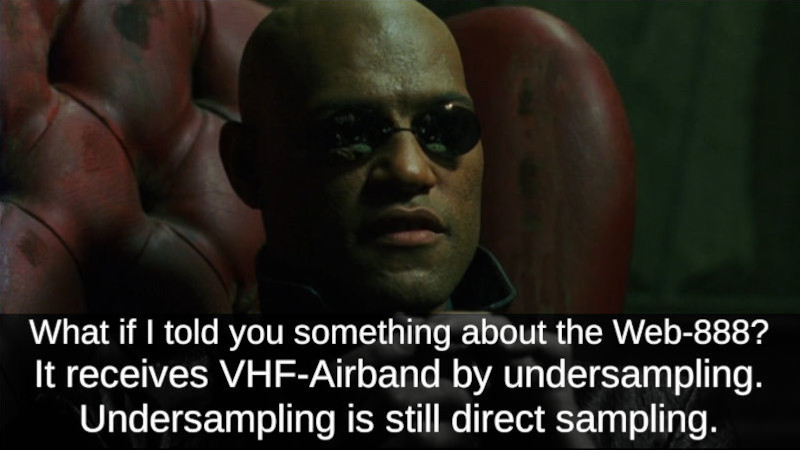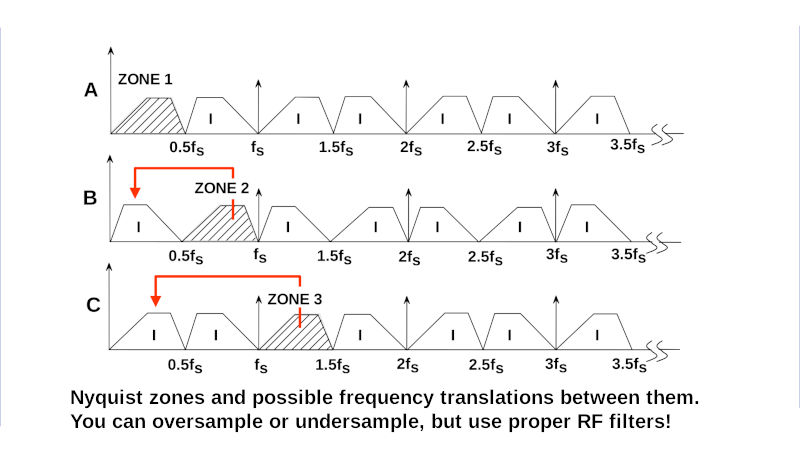It seems like yesterday when I was wrapping up a chapter in my book about the KiwiSDR, trying to make a clear argument to the reader that, one way or another, we would see advanced variants of that receiver, because it was was such a good design and implementation. In fact, a small number of SDR makers had created their own versions of the KiwiSDR, with mixed results. The attempts to create a KiwiSDR-like receiver, despite work towards significant improvements, are often simplistically criticized as knockoffs. Bear in mind that much of the hardware and software is open source, which permits other designers and builders to have a crack producing their own versions. When they do find a better way, the downstream producers are encouraged to send their new improvements back upstream. Par example the Web-888 SDR: a better Kiwi-like radio with innovations implemented back upstream in the KiwiSDR project.
Those earlier receivers often had lofty goals, and accomplished one or two notable improvements over the original KiwiSDR, but had flaws which limited their appeal. For example, the Flydog and Raspberry SDRs present an interface with a familiar look and feel, but could not offer the same decoder modules set due to certain items being proprietary to the KiwiSDR. Also, the system software of each SDR type is on its own fork, gradually diverging from the other two with every update.
Both of the newer SDR derivatives offered an improved digital resolution, 16 bits, and higher sampling rates, up to 125 MHz. That means one receiver could cover the wide spectrum span from longwave through the top of the 6 meter ham band. Clint Turner (KA7OEI) has published meaningful analyses of the Raspberry and Flydog SDR performance issues, and the challenges faced by such receivers. It is not easy to make the radios both sensitive to weak signals and resistant to overload from strong ones. It seems that the problem of keeping down the noise floor exists in the world of SDRs, just as it exists for analog receivers. Designers of both seemed to artificially tweak the higher frequency gain in the digital realm, but it is old-fashioned front end noise management which matters more. Those extra digital bits don't matter as much if the noise floor is still high.
On the Flydog, more so than on the Raspberry SDR, there are some issues with clock oscillator noise and drift. These not only impair the GPS-derived frequency corrections, but make digital modes like WSPR and FT8 unusable. The clock signal driving any oscillators and the A/D converter needs to be both rock steady and noise free. If not, noise and drift are imparted to all of the received signals.

Enter the Web-888
The good news coming out of attempts to build a better Kiwi-like SDR is that they have sparked a build up of knowledge. There is no secret about what works and what does not. Individual owners as well as designers of new equipment are modding the old designs and getting better performance. In the forums and on the blogs, I have seen accounts of users adding thermal mass to clock oscillators, adjusting amplifier gains, and modding the circuit boards of their SDRs to get better performance. It was only a question of time before an SDR manufacturer would incorporate multiple improvements into a new and significantly better radio.
The Web-888 builds upon the design ideas of existing successful hardware: the RX-888 most directly, but also draws from ideas and techniques found in the KiwiSDR, ADALM PlutoSDR, and Red Pitaya receivers. It is not so much like any one of them, but blends the better aspects of them all. For example, the front end RF filtering, low noise amplification, or attenuation, may resemble the RX-888 and Red Pitaya. On the back, end, there is an on-board FPGA chip (for handling digital signal processing) and a self-contained web interface which are similar the Pluto and Kiwi SDRs.
Building in a multiuser web interface stemmed from an observation that the RX-888 was being used for wideband internet SDR sites. Two great example are the PhantomSDR+ and WebSDR, which use the RX-888 to pick up and digitize signals, but also require the site operators to run a separate computer for digital signal processing and the web server / user interface. Why so much complexity? We know what works: doing DSP on-board and serving the interface from a tiny, included, single-board computer. The Pluto and Kiwi SDRs proved such a concept works, and may be further developed. Note that the Web-888 may accommodate thirteen (13) users simultaneously, thanks to improvements in efficiency and more raw computing power.
The Web-888 can receive continuously from 1 kHz all the way through 61.44 MHz, thanks to its high sampling rate of 122.88 MHz. Considering sampling theory, that spectrum falls within the first Nyquist zone, which is above zero through one half of the sampling rate. Any noise or signals above that zone must be intentionally filtered out, as they would otherwise be received and cause interference to the desired signals. A common concern among users of the direct sampling HF receivers is suppressing FM broadcast signals, which can be quite strong and cause very annoying interference.

Better Airband and Weather Satellite Reception
Civilian aviation band, weather satellite, and part of the two meter amateur band are also available on the Web-888, thanks to the technique of undersampling. In contrast to the oversampling used for low bands, the Web-888 uses a separate RF signal path, with filtering to suppress the first and pass the third Nyquist zone. Also, the sampling clock is set to 98.304 MHz. Undersampling is an excellent method, as there is no need for a frequency converter or tunable oscillator to get access to those frequencies. Because they introduce more noise and have inherent signal handling limits, frequency conversion has a negative impact on sensitivity, signal purity, and dynamic range. By using undersampling, the Web-888 retains simplicity and maintains the best possible performance.
I expect the Web-888 to be a superb airband and weather satellite receiver.
One thing users should always bear in mind, not solely for the Web-888, but for and SDR, is that good RF filtering is essential for preventing interference due to RF images and aliased signals in the ADC stage. Furthermore, if a low-noise amplifier (LNA) is used, the gain should be limited to the minimum necessary to hear the natural noise floor picked up by the antenna.
The Web-888 has a competitively high dynamic range, but it can be compromised by nearby high power mediumwave and HF broadcasters. I read a forum posting from an owner who found that strong broadcasters on 17 MHz were generating 35 MHz harmonics within the receiver. Lower the LNA gain and, if necessary, use the attenuator to prevent LNA overload. In extreme cases, such as being too close to a broadcaster, consider a band reject filter to attenuate that station. Some owners have also been successful with loop antennas, aiming the loop so that the strong station is nulled.
Signal Decoding Modules
The Web-888 SDR has several DSP decoding modules for modes such as NAVTEX, FT8, FT4, WSPR, CW, and other modes. Data collected from FT8 and WSPR decodes may be automatically uploaded to aggregation sites. If you want to know how well your receiver is picking up signals, compare the list of stations received locally to stations listed on the aggregation sites.
More decoding and processing extensions are in the works. What emerges probably won't be an exact match with the KiwiSDR, as some of the modules use proprietary code. Eventually, we may see independent versions of an HFDL decoder or a geolocation tool to find tramsmitters by means of TDoA.
Broadband direct sampling on the Web-888 permits running FT8 and WSPR decoders as skimmers: listening continuously on all of the designated frequencies in order to capture all of the receivable signals. A CW skimmer is said to also be in the works.
All in all, the Web-888 appears to be a great new receiver, for listeners of longwave, shortwave, aeronautical, weather satellite, and ham radio communications. It not only incorporates smart design features learned from earlier SDRs, but also slick and original innovations. I have great expectations that the Web-888 will be a superb receiver for VHF airband and weather satellites. Knowledge spreads like heat, so a successful Web-888 SDR will certainly have an effect on the design and features of future SDRs. Job well done.
Notes:
- For more on Nyquist zones, see the whitepaper on A/D converters as a bottleneck in SDRs.
- Read technical discussions about the Web-888 SDR.
© 2005 - 2025 AB9IL.net, All Rights Reserved.
Written and curated by Philip Collier / AB9IL.
About Philip Collier / AB9IL, Commentaries and Op-Eds, Contact, Privacy Policy and Affiliate Disclosure, XML Sitemap.
This website is reader-supported. As an Amazon affiliate, I earn from qualifying purchases.